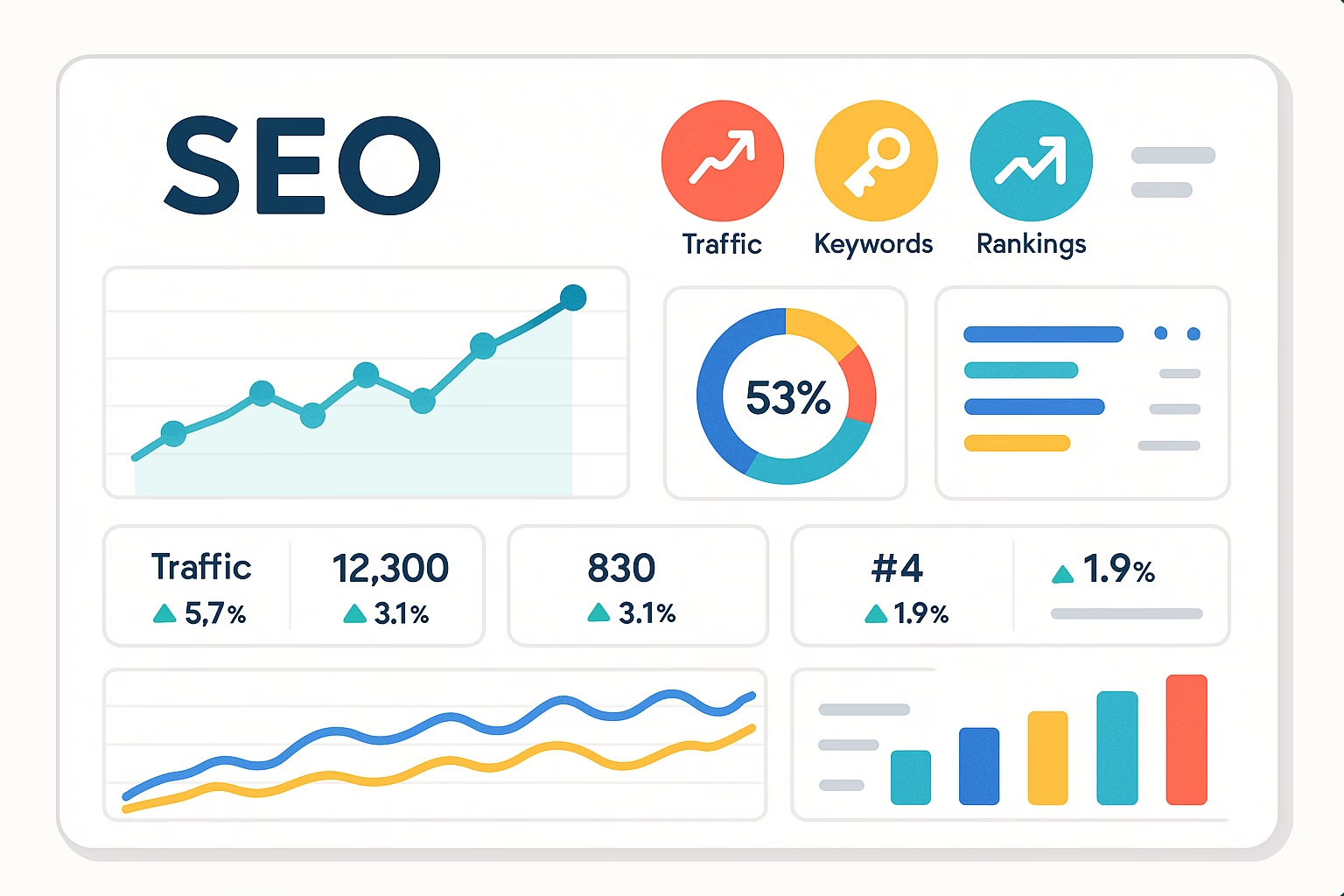On-Page SEO in 2025: Rules, Techniques, and Must-Haves
Introduction
On-page SEO remains one of the most powerful tools in your digital marketing strategy. In 2025, with search engines becoming smarter through AI and natural language processing, optimizing each page on your site for relevance, usability, and intent is more important than ever. This guide walks you through the latest rules, practical techniques, and on-page SEO essentials you need to implement now.
What is On-Page SEO?
On-page SEO refers to the optimization of content and HTML elements within a page to improve search engine visibility and user experience. It includes keyword placement, meta tags, internal linking, URL structure, and content formatting. Unlike off-page SEO, you have full control over on-page SEO — making it the foundation of your strategy.
Key Elements of On-Page SEO
1. Title Tag Optimization
The title tag appears in search results and is a major ranking factor. Keep it under 60 characters and include the primary keyword at the beginning. For example, this post uses: “On-Page SEO in 2025: Rules, Techniques, and Must-Haves”.
2. Meta Description
The meta description doesn’t directly affect rankings but it boosts click-through rate (CTR). Write compelling summaries under 160 characters that include your keyword. Ensure it matches the content’s intent.
3. Headings and Structure (H1, H2, H3)
Structure content using a clear hierarchy. Your main title should be <H1>, subheadings as <H2>, and further breakdowns as <H3>. This helps search engines and users easily navigate the page.
4. URL Structure
Short, clean, keyword-rich URLs improve SEO. Avoid unnecessary parameters and use hyphens instead of underscores. Example: /on-page-seo-2025
5. Keyword Usage
Use your main keyword in the title, first 100 words, subheadings, image alt text, and meta tags. But don’t overdo it—focus on natural language and readability. You can read more about this in our Keyword Research Strategies Guide.
6. Internal Linking
Link to related posts naturally using descriptive anchor text. This improves crawlability and keeps users on your site longer. For example, if you’re new to SEO, start with our beginner’s guide to SEO.
7. External Linking (Open in New Tab)
Linking to authoritative sources boosts credibility. Always make external links open in a new tab and use rel="noopener noreferrer" for security.
8. Image Optimization
Use high-quality images, compress them for speed, and always write descriptive alt text. For instance, “seo-on-page-2025-guide-thumbnail.jpg” is better than “image1.jpg”.
9. Mobile Optimization
Over 70% of users browse on mobile. Use responsive layouts and test on real devices. Google’s mobile-first indexing gives priority to mobile-friendly pages.
10. Page Speed
Fast-loading pages improve rankings. Use tools like Google PageSpeed Insights or GTmetrix to identify issues. Common fixes include image compression, lazy loading, and reducing server response time.
11. Content Length and Depth
Longer posts (1500+ words) generally perform better. But length alone isn’t enough—focus on providing value. Cover subtopics thoroughly, use examples, visuals, and FAQs to enrich the content.
12. User Experience (UX)
Use readable fonts, short paragraphs, white space, and visual breaks (like bullet points). Ensure CTAs are clear and navigation is intuitive.
13. Schema Markup
Add structured data (JSON-LD format) to your posts to enable rich snippets in SERPs. Use schema for articles, FAQs, reviews, breadcrumbs, and more.
14. Canonical Tags
If you have duplicate or similar pages, use canonical tags to point to the preferred version. This prevents duplicate content issues.
Checklist: On-Page SEO Must-Haves (2025)
- [x] Primary keyword in title and meta
- [x] Engaging meta description
- [x] Internal and external links
- [x] Fast loading and mobile-friendly layout
- [x] Proper heading structure
- [x] Schema markup (where applicable)
- [x] Alt text for all images
Conclusion
On-page SEO is your best chance to control how search engines and readers perceive your content. By following the updated rules and techniques outlined above, you can create pages that not only rank well but also offer a great experience to your audience. Consistency, user-first thinking, and staying updated are your keys to SEO success in 2025.










Comments 3